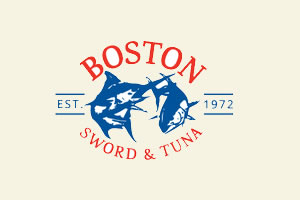

May Day
Yesterday was May Day, also known as International Worker’s Day or simply Worker’s Day, and is celebrated around the world by the working class. It may not mean a day off for most of us in the US, but it is celebrated in other countries; therefore, we will see delayed shipments of some seafood imports this week due to the holiday. While this is not news to many of you, it may come to some surprise that the holiday can trace its origin back to our wonderful city of Chicago. On May 1st, 1886, workers around the nation went on strike in support of the movement for an 8-hour workday. Three days later, during a peaceful protest in Haymarket Square, violence erupted, and what would later become known as the Haymarket Affair captured the world’s attention to laborers plight. From the carnage arose recognition and what would later become a day to celebrate worker’s rights, May 1, May Day. This week there is much to be thankful for: good weather, fresh product, and the wonderful, hardworking people that provide great food.
Groupers and Snappers are coming into swing in Florida. Fish are beginning to show with regularity. Domestic fish are cutting out better than imports, and most of the Grouper and Red Snapper are averaging eight pounds and higher. Smaller Snappers are proving difficult to source.
Striped Bass are being landed off the coast of Delaware right now as fish are making their way north. There are some fishermen with quota remaining down south, but for the next few weeks expect more landings out of the northerly waters. These fish usually garner higher prices due to the New York market, so keep an eye on the bottomline.
Right now, there are heavy landings of Black Sea Bass in the Mid-Atlantic. This fish will continue to be available for a few weeks. Fluke landings are also expected to increase in the south, but these could be mitigated by some quota restrictions in the north. Once Massachusetts gets going the market will stabilize.
Live Crayfish production is ramping up and there is product available to ship direct. We should have at least another month of Crayfish, so keep these critters in mind for any outdoor events. They can be a lot of fun and extremely delicious, if you’re willing to put in the work.
The full moon has stunted the Mahi supply the last two weeks. The market has responded with higher costs. I expect the supply to get better next week, though with waters warming, we could see this expensive trend continue as fish migrate.
Although last week was the unofficial start of the South Carolina Fresh Shrimp Season, the Shrimp were not ready. Due to cold water temperatures, the Department of Natural Resources (DNR) is not expecting the season to begin until June. The DNR uses data collected from research trawls to determine when to start the season. If the nets are empty, it’s not yet time. It looks like this could be a late, or worse, poor fresh Shrimp season.
Gourmet Grab
With this spring weather finally warming our faces with the sun’s rays, there’s probably no better time to highlight chickens freely roaming lush, grassy farmland than now. Ever wonder what’s the difference between cage-free, free-range, or pasture-raised eggs?
Well one of our brands that sources all these types of eggs is Farmer’s Hen House in Kalona, Iowa. They are a processing facility (owned and operated by the Miller family since 2000, 100% solar-powered too) that source cage-free eggs from Amish and Mennonite family farms within a 30-mile radius of their facility.
So the difference between all these terms can be imagined as rungs in a step-ladder:
Bottom rung – “Cage-free” means the hens are never put in cages and can freely roam their barns that provide spacious perches, dust bathing areas, and lots of fresh air & sunlight. ALL Farmer’s Hen House eggs are 100% cage-free. Their food never includes animal byproducts, antibiotics, or hormones and the hens lay both white and brown eggs.
Middle rung – “Free-range” is a step up from cage-free and allow the hens to frolic both indoors and outdoors. Free-range hens are given at least 2 square feet, per bird, outdoors.
Top rung – “Pasture-raised” is a step up from free-range and allow the hens even more outdoor access. Their pasture-raised hens are guaranteed 108 square feet, per bird, outdoors. These eggs will ALWAYS be organic (organic eggs are from hens fed a 100% organic, non-GMO, vegetarian diet).
With both retail and foodservice offerings, check out Farmer’s Hen House’s wonderful line of high-quality eggs that are ideal for the customer/chef concerned about animal welfare, with the flavor to back it up.















